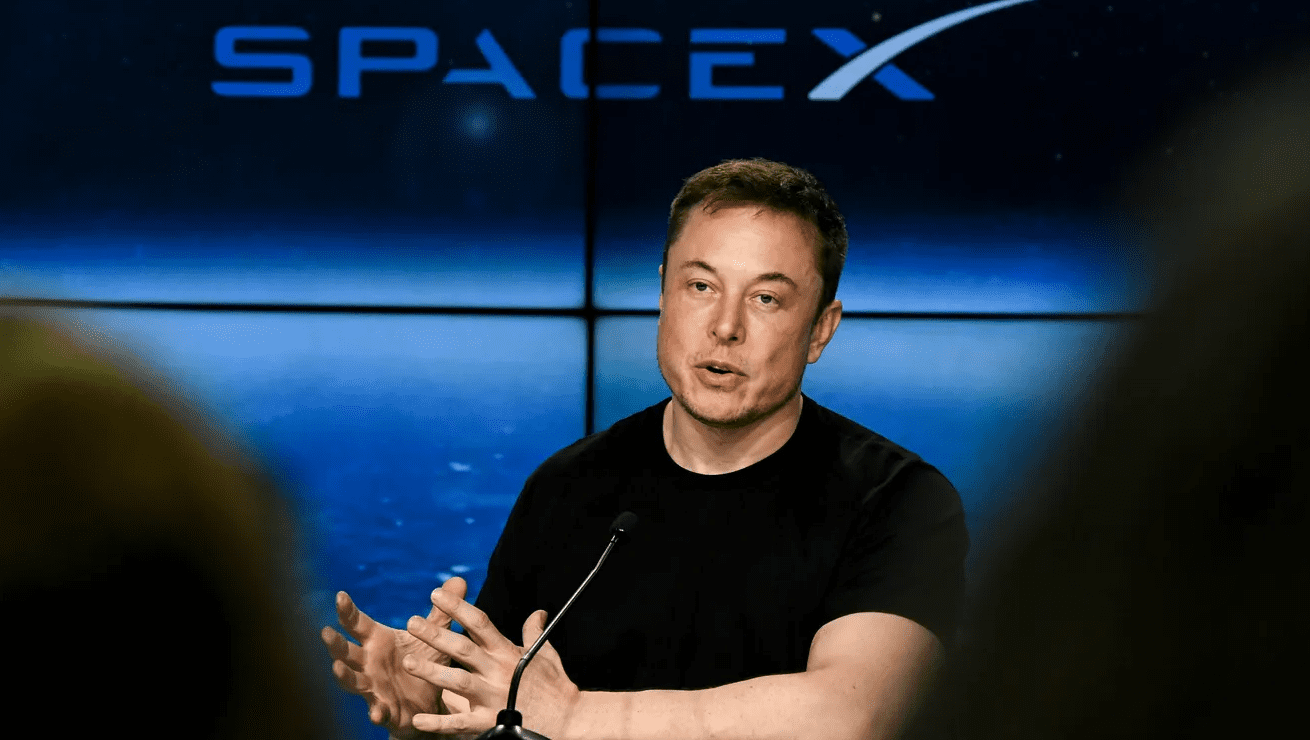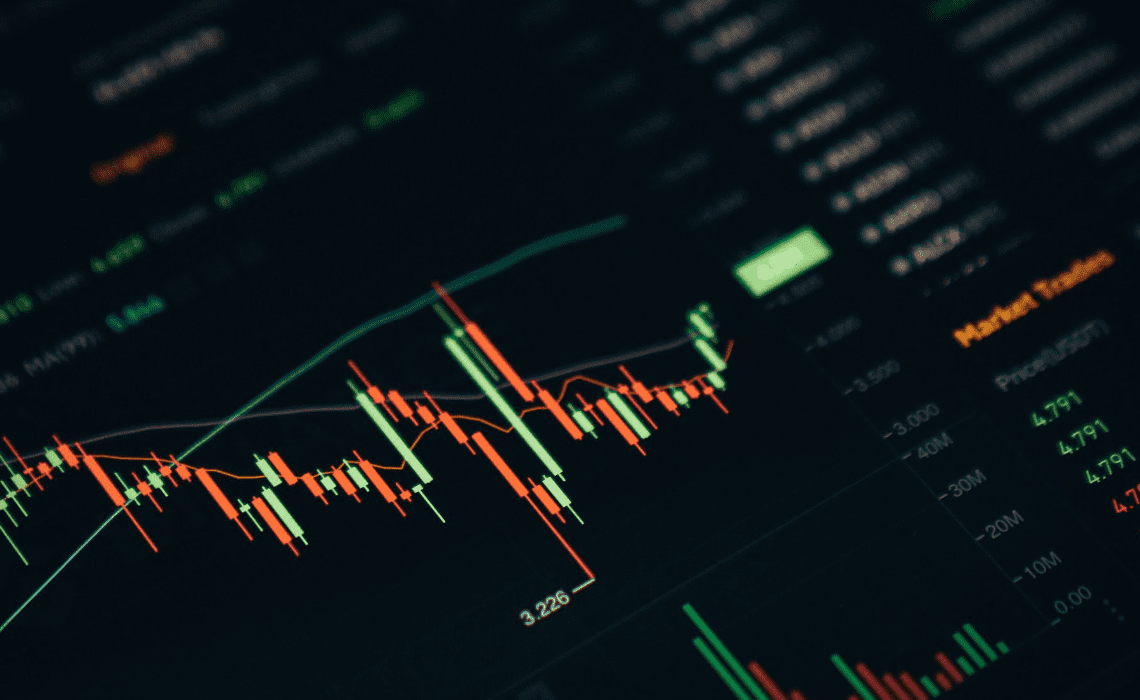Ever dreamed of being part of the space exploration revolution spearheaded by Elon Musk’s SpaceX? It’s true that investing in SpaceX holds tantalizing possibilities, but how exactly can you buy SpaceX stock? In this comprehensive guide, we’ll walk you through the ins and outs of investing in SpaceX, from understanding the company to navigating the complex world of indirect investment opportunities.
Short Summary
Understanding SpaceX and its private status, as well as the current post-money valuation of over $10 billion.
Indirect investment opportunities to gain exposure to SpaceX without direct investment through parent companies or ETFs specializing in space technology companies.
Step by step guide for investing in SpaceX with considerations such as selecting a broker, researching investments options, diversifying portfolios and monitoring performance when selling your investments.
Understanding SpaceX

SpaceX, a private company founded by Elon Musk in 2002, has significantly impacted the space industry, currently boasting an impressive valuation of $137 billion. They have achieved various firsts in the industry, such as reducing space transportation costs and enabling reusable rockets.
However, as a private company, SpaceX is not available for public investing, leaving retail investors with limited options to buy SpaceX stock directly. So, what can you do to invest in SpaceX? Read on to find out.
Company background
Founded by Elon Musk, SpaceX is a private company known for its Falcon 9, Falcon Heavy, Starship, and Starlink offerings. Its ownership is split between Elon Musk, Bank of America, Google, and various private equity firms.
This means that unlike publicly traded companies, SpaceX shares are not readily available on stock exchanges, making it challenging for retail investors to invest in the company directly.
Business model
SpaceX’s business model revolves around manufacturing and launching rockets into Earth orbit, charging both government and commercial customers for delivering goods into space. The company generates revenue through the provision of launch services to its customers, with its pricing model determined by factors such as the type of launch, payload, and destination.
For example, SpaceX offers a Falcon 9 launch for $62 million, while a Falcon Heavy launch costs $90 million. Additionally, the company charges customers for the payload, which can range from $2,500 to $20,000.
Current valuation
As of January 1, 2023, SpaceX’s post-money valuation is estimated to be over $10 billion, with the company recently attaining a valuation of $137 billion through its latest round of funding.
This impressive valuation highlights the company’s growth and potential in the space industry.
The Reality of SpaceX Stock
The reality is that SpaceX remains a private company and is not available for public investment. There is currently no information regarding a potential Initial Public Offering (IPO). This means that retail investors have limited options to invest in SpaceX directly.
However, there are still ways to gain exposure to SpaceX through indirect investment opportunities, which we will explore in the following sections.
Private status
SpaceX’s private status means that its securities are not publicly traded. The company has been successful in securing private investments to finance its operations.
Investors looking to acquire shares of private companies like SpaceX must complete a comprehensive accreditation process, possess adequate capital, be prepared to pay brokerage fees, and accept non-negotiable pricing.
IPO prospects
Although going public could provide SpaceX with additional funding, there is currently no explicit information available about when or if SpaceX will conduct its IPO.
Investors interested in SpaceX should monitor the IPOs of other companies owned by Elon Musk to stay informed about potential developments.
Indirect Investment Opportunities
Since investing in SpaceX directly is not an option for most retail investors, indirect investment opportunities present a viable alternative. These opportunities involve investing in parent companies like Alphabet, Fidelity, and Bank of America, who have already invested in SpaceX, or ETFs that specialize in space technology companies.
Investing in parent companies
Investing in parent companies means acquiring shares of companies that have an ownership stake in SpaceX, either directly or indirectly. Parent companies like Bank of America and Alphabet (Google) have made investments in SpaceX, making them potential investment targets for those looking to gain exposure to SpaceX.
Researching these companies and their involvement with SpaceX can help investors make informed decisions about their investments.
Space industry ETFs
Space industry ETFs are exchange-traded funds that invest in companies related to the space industry, including aerospace and defense companies, enabling technology companies, and those with material exposure to space-related industries. Examples of space industry ETFs include ARKX, Procure Space ETF, and VanEck Space Innovators UCITS ETF.
These ETFs offer an indirect way to invest in the space technology sector, which includes companies like SpaceX.
Step-by-Step Guide to Investing in SpaceX

Now that you understand the landscape of investing in SpaceX, let’s dive into a step-by-step guide to help you navigate the process. We’ll cover selecting a broker, funding your account, researching investment options, determining the investment amount, placing an order, and monitoring performance.
Selecting a broker is the first step. You’ll want to find one that offers the best combination of fees, customer service, and research tools. Once you’ve chosen a broker, you’ll need to fund your account. This is a very good article.
Selecting a broker
Selecting the right broker is crucial for a successful investment experience. Options include full-service brokers, discount brokers, online brokers, and robo-advisors. Each option has its benefits and drawbacks, so it’s important to carefully consider your individual needs and preferences.
Reputable brokerage firms include Etoro, Webull, Robinhood, Interactive Brokers, and E-Trade. Researching a broker before selecting one helps ensure you choose a provider with a good reputation, necessary services, and competitive fees.
Funding your account
Once you’ve selected a broker, you’ll need to fund your account. Options for funding a stock trading account include wire transfer, bank transfer, check, credit/debit card, and electronic payment services.
The procedure for funding your account may vary depending on the broker you select, but generally involves providing your banking information and the amount you wish to deposit. Be mindful of any fees associated with funding your account and the estimated timeline for the transfer.
Researching investment options
Before investing in SpaceX or any other company, it’s essential to research the investment options thoroughly. This can involve using research platforms, reviewing company reports, and assessing financial metrics.
Types of analysis include bottom-up analysis, top-down analysis, fundamental analysis, and technical analysis. Gaining insight into the investment options will help you make informed decisions based on facts and data.
Determining investment amount
When it comes to determining the amount to invest in SpaceX or other companies, consider your financial objectives and the funds available. Investment calculators can help estimate the potential return on investment and identify the optimal investment strategy for your individual financial goals.
Avoiding Common Investment Mistakes
Navigating the world of investing can be tricky, and it’s essential to avoid common investment mistakes. In this section, we’ll discuss the importance of diversification, the risks of emotional investing, and the benefits of taking a long-term perspective when investing in stocks.
Diversification is key to any successful investment strategy. By spreading your investments across different asset classes, you can reduce the risk of any one investment performing poorly. Additionally, diversification can also be beneficial.
Diversification
Diversification is a critical strategy for reducing risk by spreading investments across different assets and sectors. Types of diversification include asset class, sector, geographic, and currency diversification. The advantages of diversification include decreasing risk, augmenting returns, and providing a safeguard against inflation.
However, there are risks associated with diversification, such as underperformance, over-diversification, and concentration.
Emotional investing
Emotional investing occurs when investment decisions are made based on emotions rather than rational analysis, potentially leading to buying high and selling low, and ultimately, financial loss. To avoid emotional investing, it’s important to remain objective and make decisions based on evidence rather than emotions.
Recognizing the distinction between stock performance and business performance, inquiring about the overall picture, abstaining from monitoring investments daily, and concentrating on items within your influence can help prevent emotional investing.
Long-term perspective
Adopting a long-term perspective when investing offers potential growth and compounding of investments over time, reduced costs, increased profits, and a reliable way to create wealth.
However, it’s important to consider market volatility, inflation, and the potential for losses when investing with a long-term perspective. To take a long-term perspective when investing, it’s essential to diversify investments, conduct market research, and devise a strategy for when to purchase and dispose of investments.
Selling Your SpaceX-Related Investments
If you have successfully invested in SpaceX indirectly or are considering doing so in the future, it’s crucial to know how to sell your SpaceX-related investments. In this section, we’ll cover monitoring performance, creating a sell order, and reassessing financial goals.
Monitoring performance is important to ensure that your investments are performing as expected. You should keep an eye on the stock price, news, and other indicators to make sure that your investments are still on track.
Monitoring performance
Monitoring the performance of your SpaceX-related investments is essential to ensure they are meeting your expectations. Track the stock’s price movements, research news and analyst reports, and stay up-to-date with the company’s financials to make informed decisions about maintaining or disposing of your investments.
Creating a sell order
When it’s time to sell your SpaceX stock, log in to your broker account, navigate to the stock’s detail page, input the number of shares or dollar amount you wish to offload, and select the ‘sell’ option. Various order types are available, such as market orders, limit orders, stop orders, and one-cancels-other (OCO) orders. Choose the order type that best suits your primary objective for the trade.
Once you have sold your stock, continue to track its price movements and stay informed about any news or developments that may affect its performance.
Summary
In conclusion, investing in SpaceX may seem complex due to its private nature, but this comprehensive guide has provided you with the essential steps and strategies to navigate the world of SpaceX investments. By understanding the company, exploring indirect investment opportunities, following a step-by-step guide, and avoiding common investment mistakes, you can confidently embark on your journey to invest in SpaceX and potentially benefit from the future of space exploration.
Frequently Asked Questions
Is SpaceX on the stock market?
Unfortunately, as of now SpaceX does not have any stocks publicly available for trading. Despite the interest from investors, the aerospace powerhouse is still a private venture and is not currently on the stock market.
How much is 1 share of SpaceX?
Since it is not a publicly traded company, there is no price for a share of SpaceX. However, as per reports, the current funds available for employees and private investors stands around $77.
Do SpaceX employees get stock?
Yes, SpaceX employees do get stock. The company conducts secondary offerings regularly to provide equity liquidity to current and former staffers. Granting stock awards twice a year on May 15 and Nov 14, 2022.
What is Elon Musk invested in right now?
Currently, Elon Musk is heavily invested in private companies, cryptocurrencies, and a dedicated family office known as Excession. His major investments include PayPal, SpaceX, DeepMind Technologies, Tesla, and The Boring Company.




